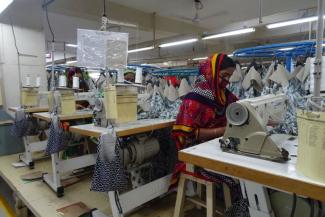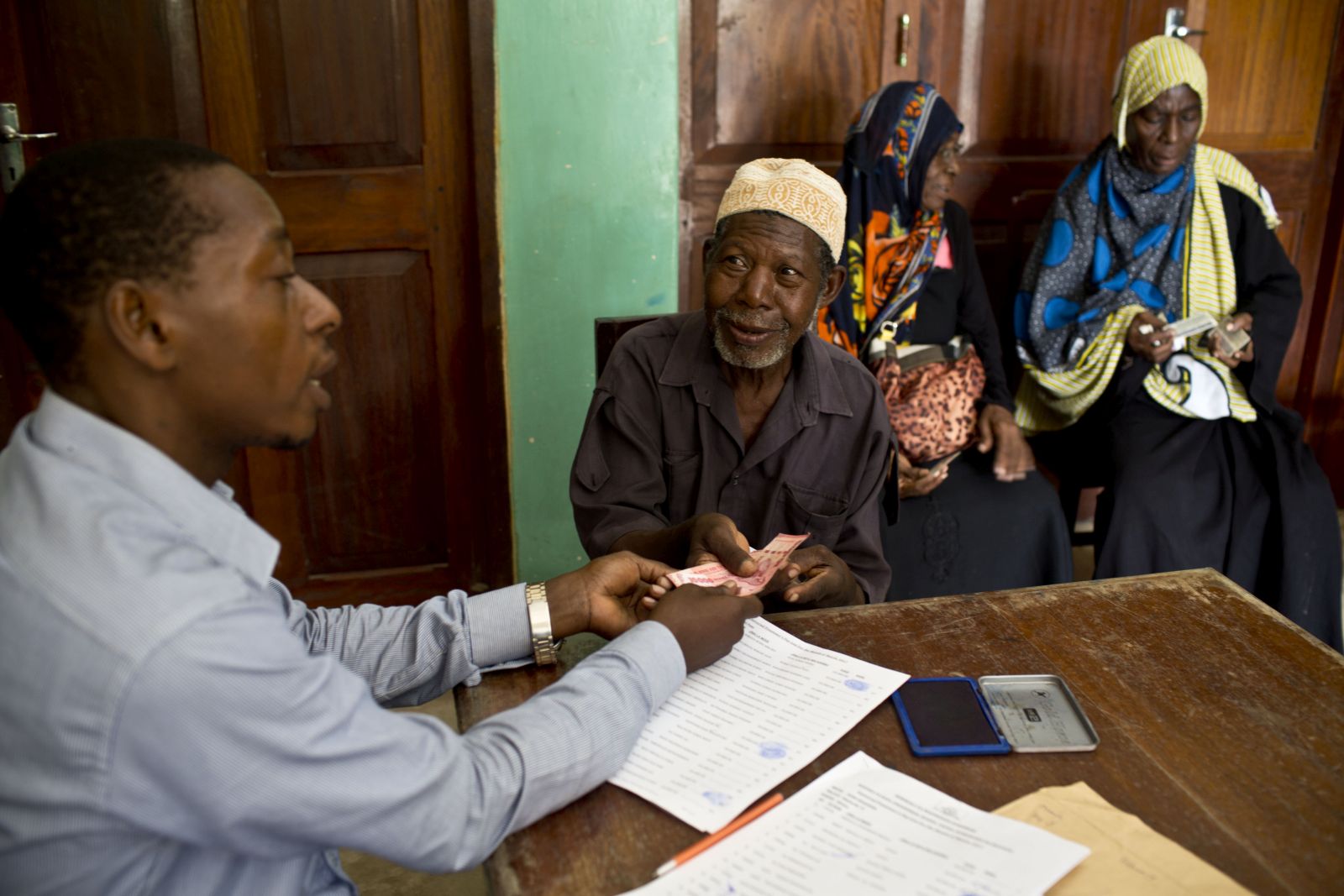World economy
Sustainability requires fair wages

According to Hütz-Adams, the global economy can only be made more sustainable if environmental progress is flanked by social progress. A central issue, he states, is how high wages and incomes need to be to provide people with sustainable livelihoods everywhere. The researcher argues that national minimum wage legislation has often proved insufficient to ensure decent standards of living in developing and emerging countries. Therefore, a large number of organisations, trade unions and companies are endeavouring to define and implement living wages in many countries and sectors.
According to Hütz-Adams, recent research indicates that it is possible to define appropriate living wage for a given geographical region. Most organisations campaigning for fair pay use the Anker method for this purpose. It was developed by economist Richard Anker, a former senior economist at the International Labour Organisation (ILO). His method is based on the following information:
- the cost of an affordable, nutritious diet,
- the cost of acceptable basic housing,
- the cost of clothing and footwear and
- the cost of covering other essential needs.
An appropriate living wage can be calculated on the base of these costs and the size of wage-earners’ households. Hütz-Adams warns, however, that calculating cost of living can be very difficult in developing countries, where statistical data tend to be unreliable or even unavailable. Moreover, costs often vary dramatically within countries.
Bangladesh is a country where numerous organisations are currently working on the implementation of a living wage. Eighty percent of the country’s garments industry is concentrated in and around Dhaka, the capital. To apply the Anker method, comprehensive data was collected in the spring of 2016. The costs of food and housing were checked, for instance. Hütz-Adams calls the results “sobering”. On the outskirts of the agglomeration, a living wage is the equivalent of $ 177, but $ 214 are required in its centre. The wages that are actually paid range from $ 69 to $ 83 a month, depending on skill level, which implies that wages would have to more than double to ensure a decent livelihood.
Studies on pay levels are similarly being carried out for other sectors and countries – for instance for cut flowers from Kenya, tea from Malawi or electronic goods from China. The findings differ dramatically, but in most cases the wages paid are not sufficient to meet the cost of living. As Hütz-Adams explains, things are even harder to assess in regard to smallholder farmers.
Implementing a living wage is the next challenge, as Hütz-Adams points out. Attempts are being made in various sectors – including the garment industry in Bangladesh. “Everyone involved is aware that these processes take time,” the author writes. One problem in the garment sector is that companies in the supply chain want to retain a fixed share of the prises as profit. The result is that if a garment leaves a factory at a moderately higher price to cover better pay for the workforce, the retail price rises exponentially. The retail price of a shirt that would cost three dollars might thus rise to nearly € 16.
Stressing that the introduction of living wages is a long process that requires the involvement of many parties, Hütz-Adams offers advice to all of them. Everyone who is relevant in the supply chain – from company managers to trade-union leaders and government officials – should join networks committed to achieving the goal. Relevant data could then be systematically and comprehensively collated and made publicly available.
Hütz-Adams also wants the German government to act. He believes it should:
- make it a legal requirement that German companies have to pay living wages throughout the value chain,
- make the payment of living wages a precondition for public procurement,
- create complaint mechanisms so those who are not paid fairly can claim their rights and
- call for legally binding international standards that companies that operate internationally must observe.
The author also addresses demands to manufacturers and retailers. They should:
- design their supply chains in a way that allows them to understand the provenance of the products they buy and
- set price in a way that facilitates the payment of living wages throughout the supply chain.
Hütz-Adams believes that banks and other financiers should only make money available to companies that provide verifiable information concerning their commitment to social and environmental standards as well as human rights. Moreover, he sees a role for consumers, who should demand to know whether living wages were paid to everyone involved in the manufacture and distribution of a product.
Georgios Zervas, a management consultant, and Peter Spiegel, a futurologist, go a step further than Hütz-Adams. They propose an amazingly simple solution for tackling extreme poverty: a global minimum wage of one dollar an hour after taxes and contributions to national social protection schemes. The net wage of one dollar would have to be observed as an absolute minimum throughout the world. The authors claim that it would allow the worst forms of exploitative slave labour to be eliminated at one blow. It should apply to developing and emerging countries where there is currently no minimum wage or only a very low one, they argue.
Zervas and Spiegel also consider Bangladesh’s garments industry an example. The minimum wage there is the equivalent of $ 50 a month, which amounts to 15 to20 cents an hour. Raising it to one dollar would make a big difference. However, the two authors accept that a minimum wage is not implementable in every sector, especially not in agriculture.
Apart from raising employees’ incomes, Zervas and Spiegel claim the one-dollar-an-hour solution would have another positive effect: to put a limit to wage competition in the developing word. Entire industries would not keep migrating from country to country in the hunt for ever lower wages. The authors insist their radical proposal would be economically feasible. If all companies were under the same obligation to pay a minimum wage of one dollar an hour, competition would not be distorted, they point out.
Moreover, Zervas and Spiegel see a minimum wage as the “most effective of all imaginable stimulus programmes for the global economy”, because nearly all of the money earned by the poor is spent immediately and thus goes straight back into the economic cycle. Another advantage would be that international migration would decline as livelihoods in poor countries improve. The problem with the proposal made by Zervas and Spiegel is its implementation. The authors only mention this issue fleetingly, calling for the ILO to approve the minimum wage and monitor its enforcement. In their eyes, the broadest possible coalition of business actors, civil society and policymakers should promote the reform.
Book and link
Zervas, G., and Spiegel, P., 2016: Die 1-Dollar Revolution (The one-dollar revolution). Piper, München/Berlin (only in German).
Hütz-Adams, F., 2017: Nachhaltigkeit erfordert Gerechtigkeit (Sustainability requires fairness) (only in German).
http://www.suedwind-institut.de/fileadmin/fuerSuedwind/Publikationen/2017/2017-03_Nachhaltigkeit_erfordert_Gerechtigkeit.pdf














